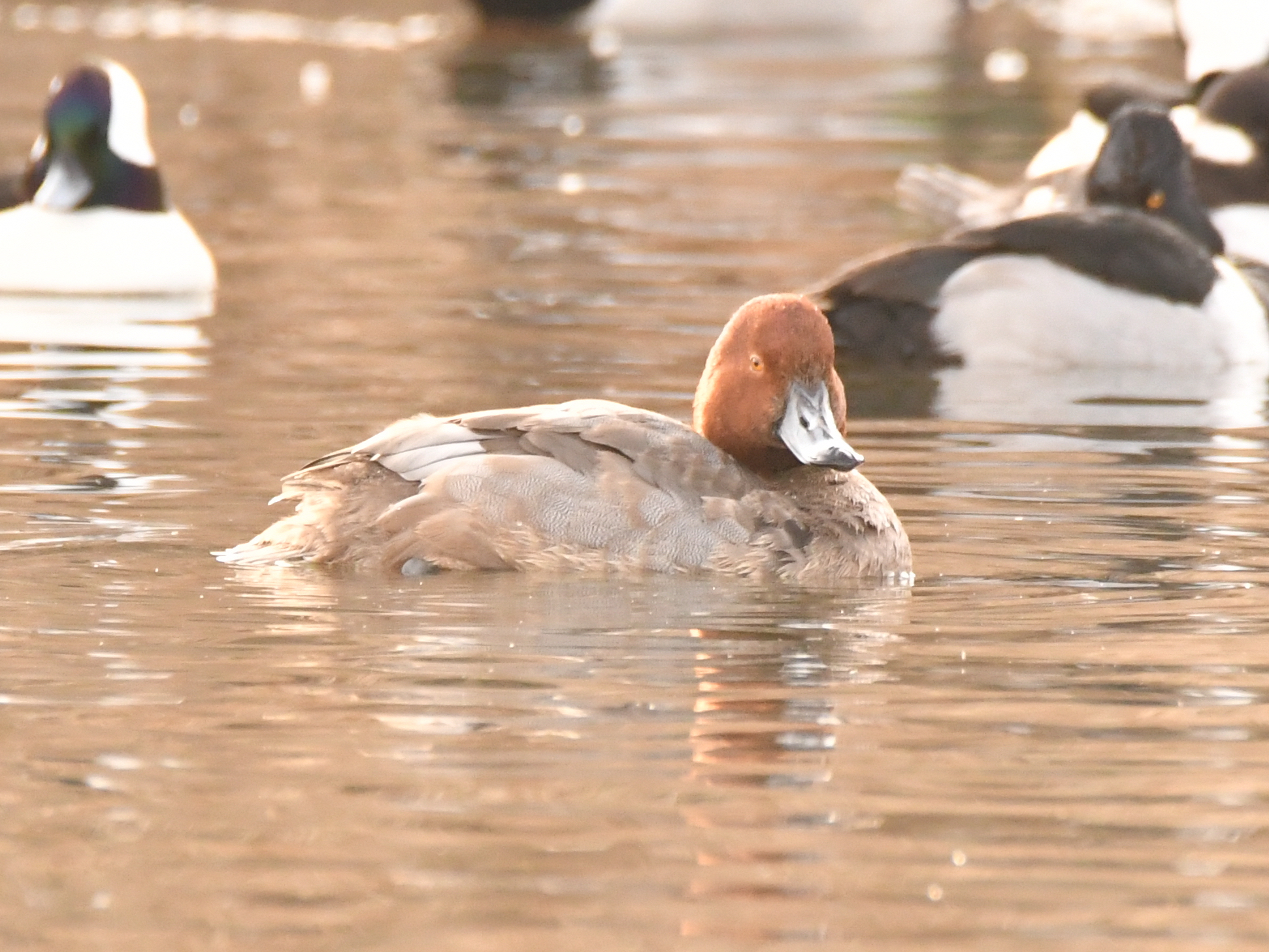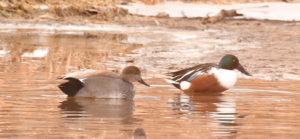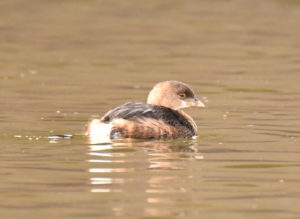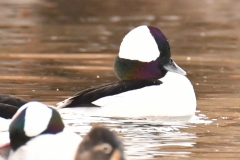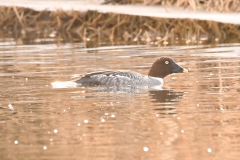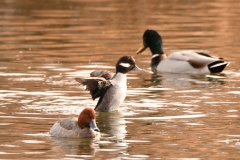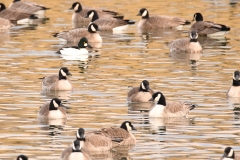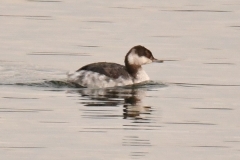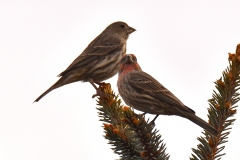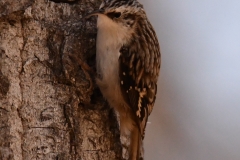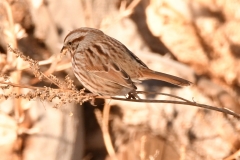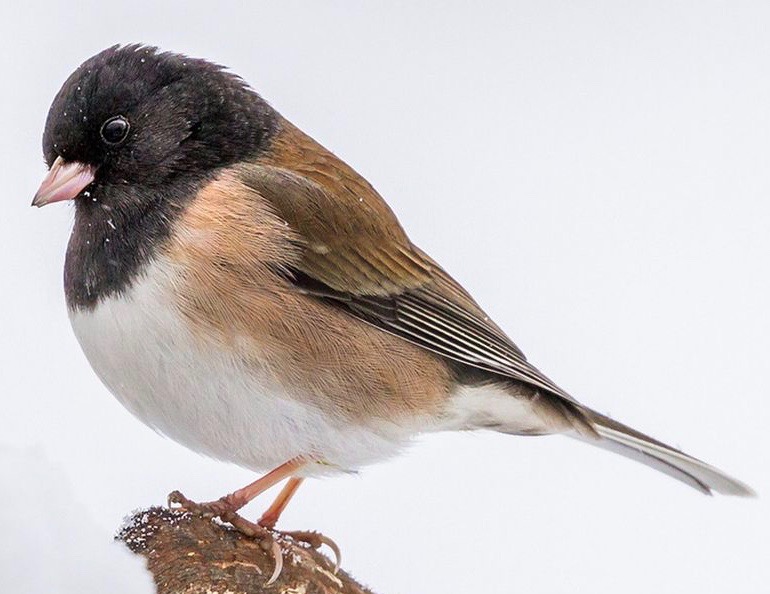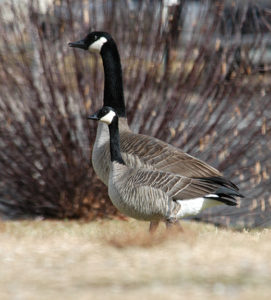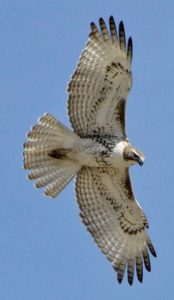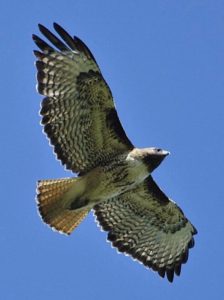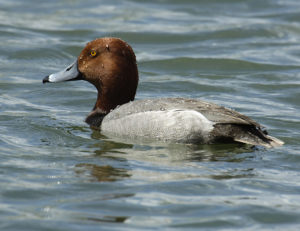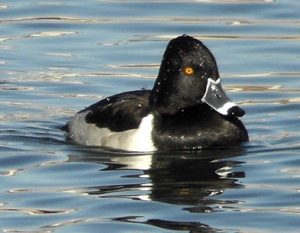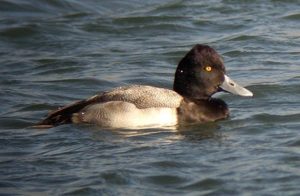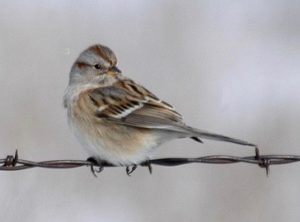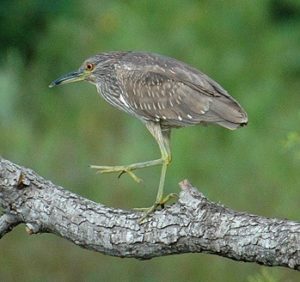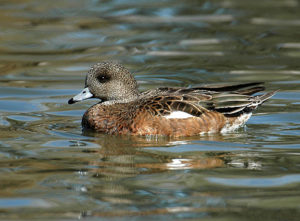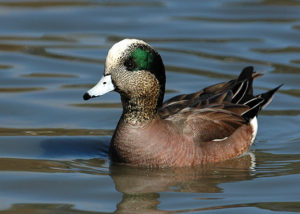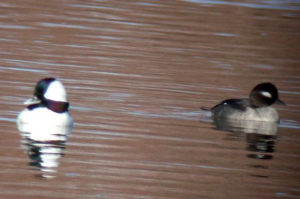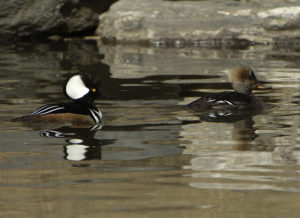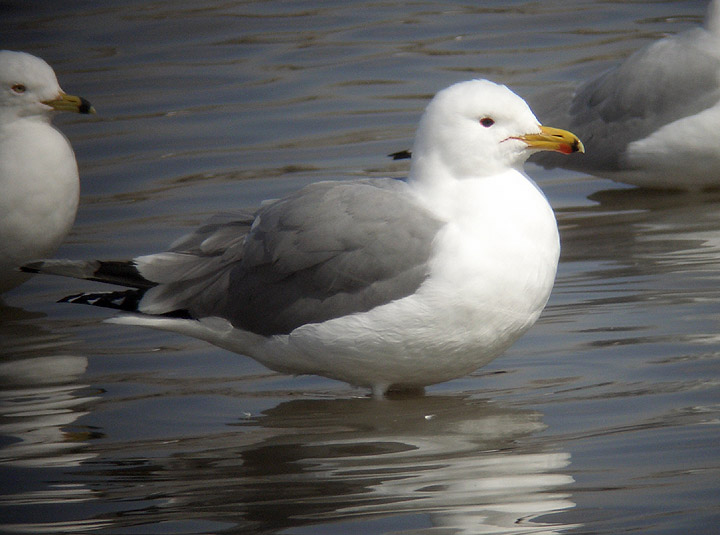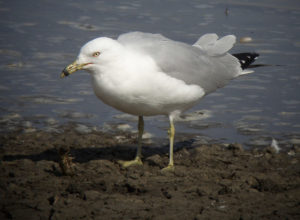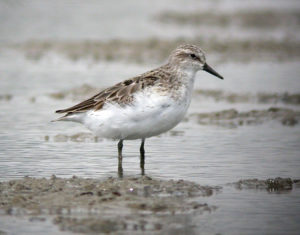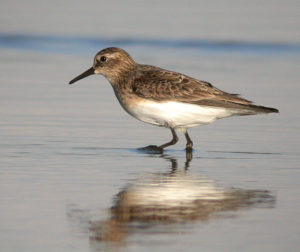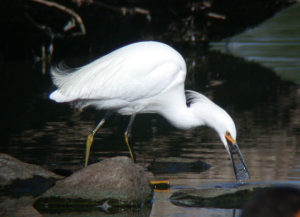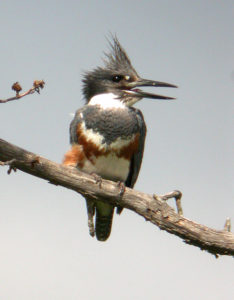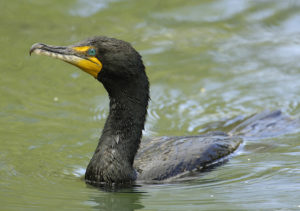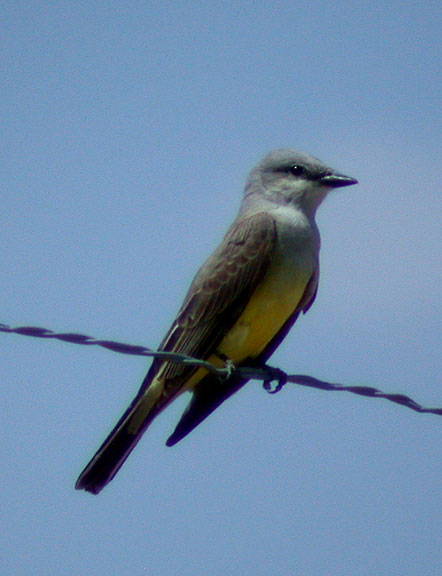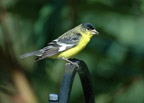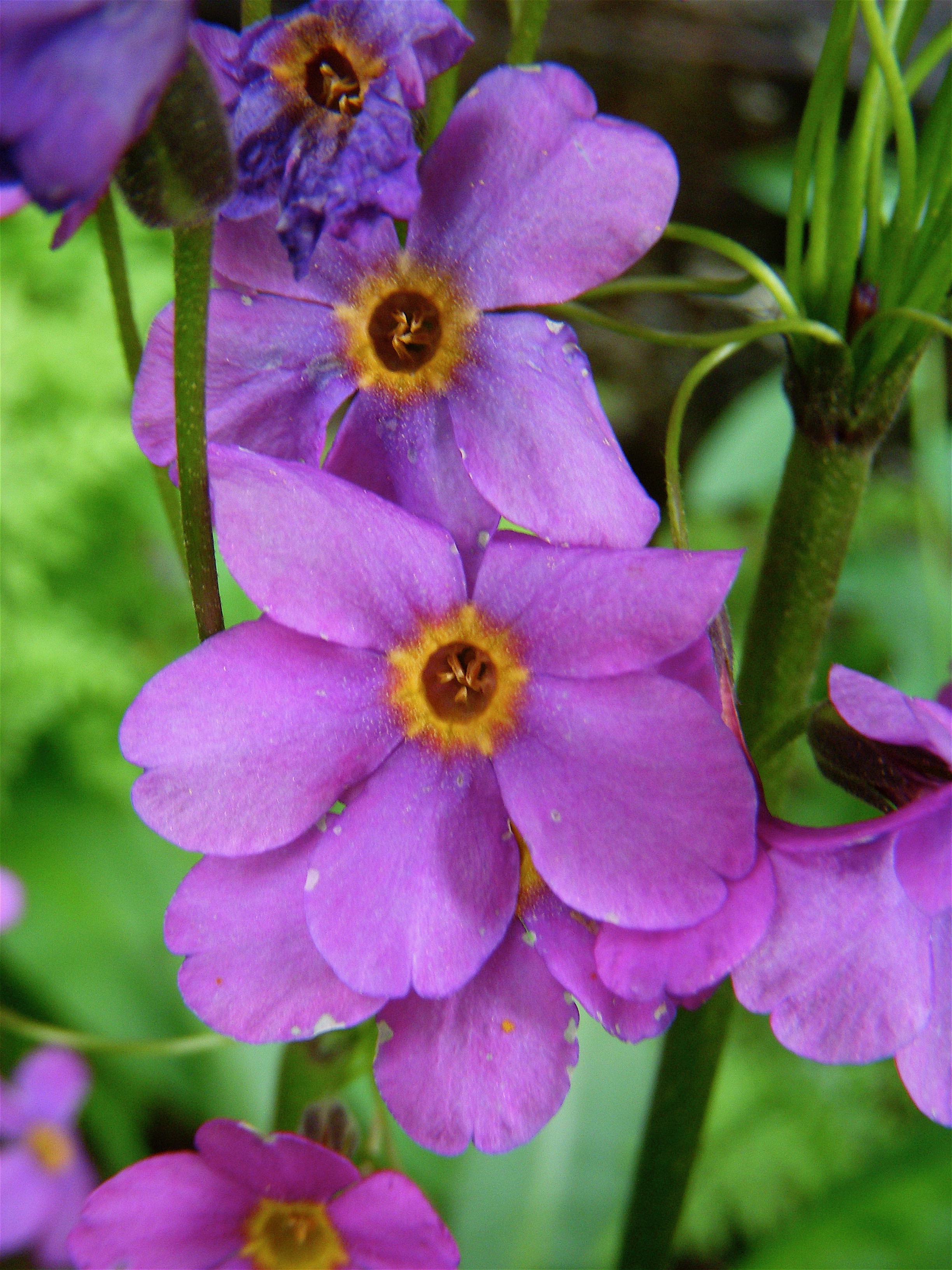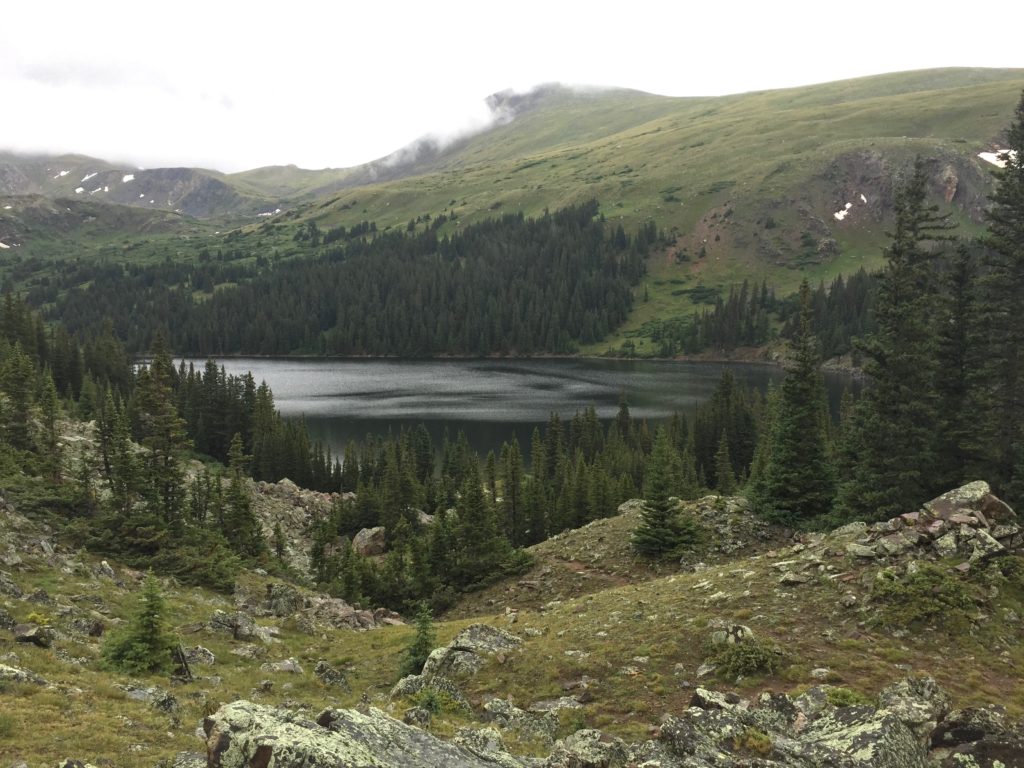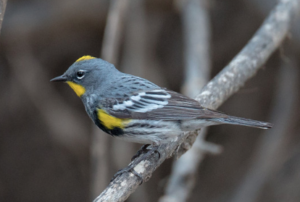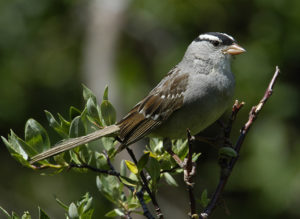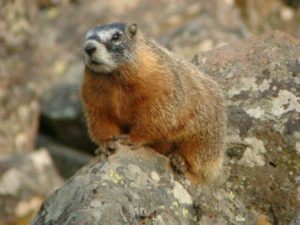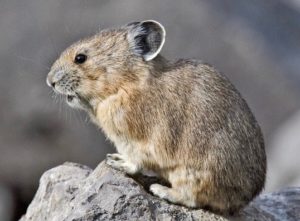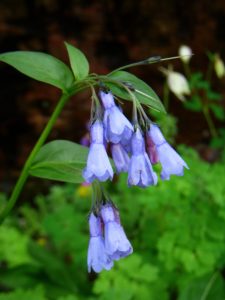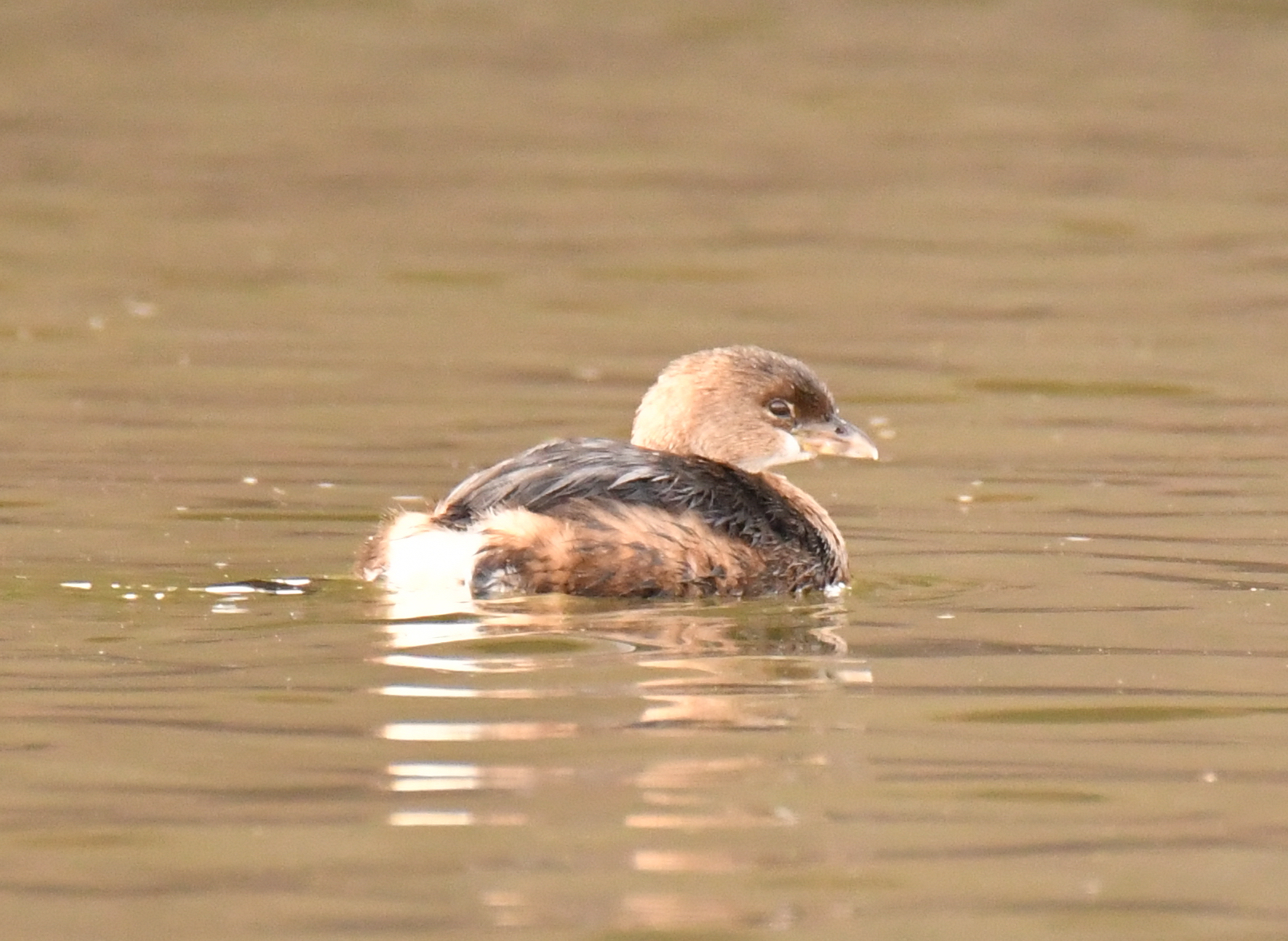
Beautiful blue skies made for excellent birding this past Saturday morning along the South Platte River at Hudson Gardens. A wide range of birds were seen, from a tiny Ruby-crowned Kinglet to an enormous juvenile Bald Eagle and everything in between!
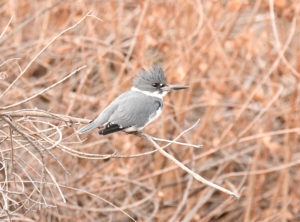
We often heard the duo of Belted Kingfishers approaching our group before we saw them — their metallic, rattling calls are unmistakable. (c) David Chernack
Our walk largely consisted of hugging the South Platte, keenly eyeing the only non-frozen water in the vicinity for large numbers of waterbirds. Present in huge numbers were Cackling geese, which actually vastly outnumbered their more well-known relatives, the Canada geese. Amongst the large number of Cackling and Canada geese was one “gray goose” from the genus Anser, which includes the Ross’s geese and Snow geese. Those species are uncommon but regular winter visitors to the greater Denver area, and associate with Cackling and Canada geese while here; in their breeding grounds, they also hybridize with them, creating a broad and confusing spectrum of hybrids which can be difficult to identify. Our mystery goose gave our group the impression of a Canada X Ross’s goose hybrid, but it flew off with several Cackling geese before we could make the final call. Shame!
Also present along the river were Denver’s usual cast of winter characters, including Ring-necked Ducks, Mallards, Green-winged Teals, Gadwalls, and Hooded Mergansers. Not seen on our previous excursion to Hudson Gardens, two female Common Mergansers were present along our route, with one individual which was preening gave us excellent scope views. A mated pair of Common Goldeneyes were also found amongst the other ducks, and showed off their bright breeding plumage. A handful of Buffleheads energetically foraged as we advanced along the river, diving below the surface and quickly resurfacing.
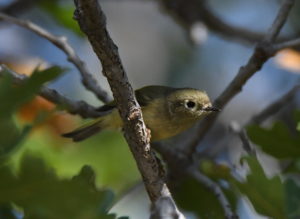
Seeing a Ruby-crowned Kinglet on a crisp winter morning was a little boost of summertime for our group! This individual was photographed in Ken-Caryl in September. (c) David Chernack
Our group found a surprising diversity of landbirds along our route as well. A unique surprise was seeing a Ruby-crowned Kinglet, a tiny bird filled with energy. Interestingly, the bird was foraging alongside some sparrows and Brown Creepers. A distinctly not tiny bird which we spotted perched atop a telephone pole was an impressive immature Bald Eagle; the bird was just beginning to show off its distinctive white head plumage. Also seen were two cantankerous Belted Kingfishers, a pair of Northern Flickers, and a single Red-breasted Nuthatch.
Check out the full list of species below or on eBird here!
David Chernack
800 |
Cackling Goose |
|---|---|
100 |
Canada Goose |
1 |
goose sp. |
4 |
Gadwall |
150 |
Mallard |
4 |
Green-winged Teal |
14 |
Ring-necked Duck |
16 |
Bufflehead |
2 |
Common Goldeneye |
8 |
Hooded Merganser |
3 |
Common Merganser |
1 |
Pied-billed Grebe |
1 |
Bald Eagle |
3 |
Red-tailed Hawk |
2 |
American Coot |
8 |
Ring-billed Gull |
1 |
Rock Pigeon (Feral Pigeon) |
2 |
Belted Kingfisher |
2 |
Northern Flicker (Red-shafted) |
1 |
American Kestrel |
2 |
American Crow |
24 |
Black-capped Chickadee |
1 |
Red-breasted Nuthatch |
2 |
Brown Creeper |
1 |
Ruby-crowned Kingletin tree along Mary Carter Greenway trail |
1 |
American Robin |
4 |
Dark-eyed Junco |
1 |
Song Sparrow |
3 |
sparrow sp. |
15 |
House Finch |


